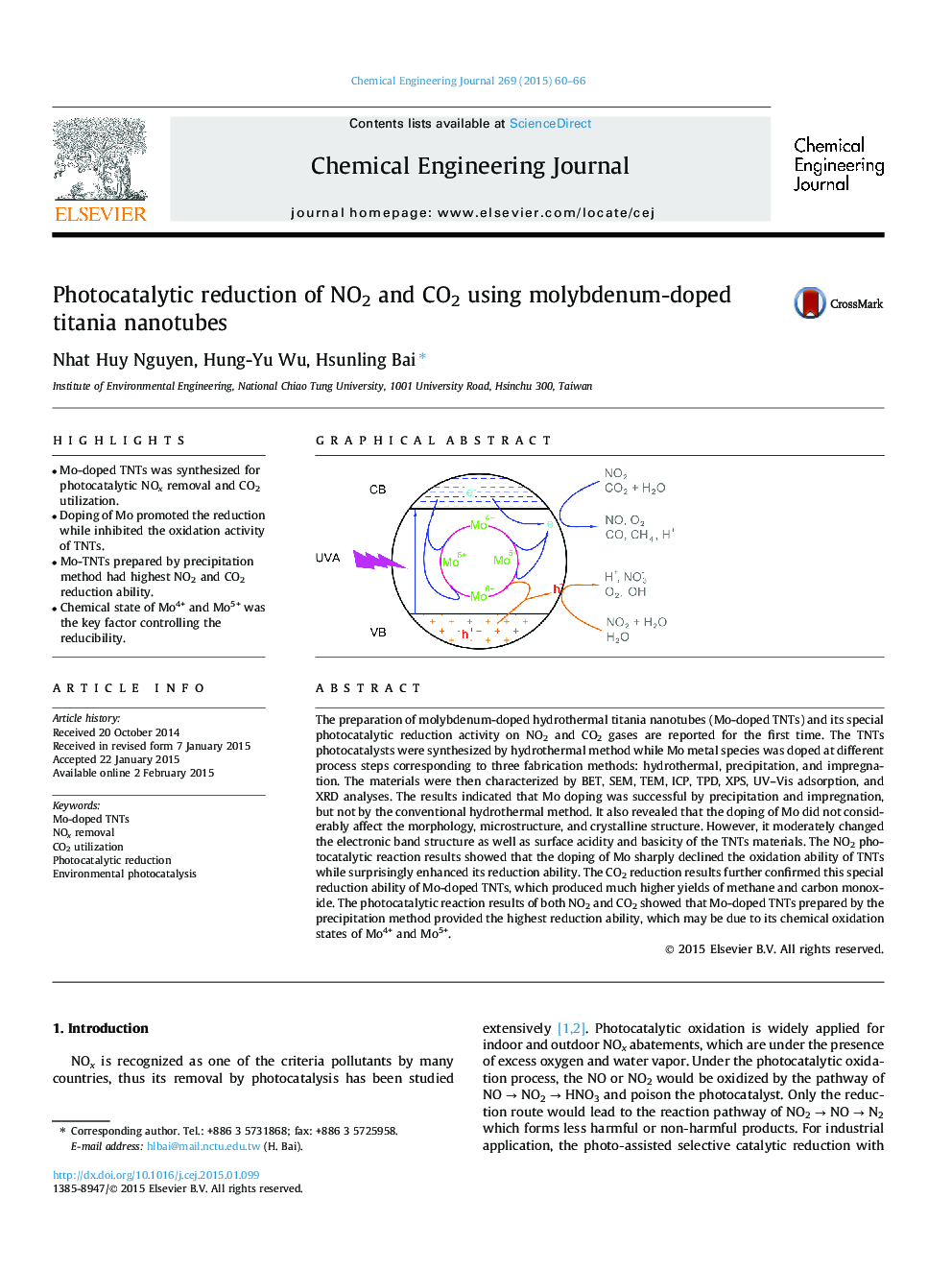| کد مقاله | کد نشریه | سال انتشار | مقاله انگلیسی | نسخه تمام متن |
|---|---|---|---|---|
| 146511 | 456372 | 2015 | 7 صفحه PDF | دانلود رایگان |

• Mo-doped TNTs was synthesized for photocatalytic NOx removal and CO2 utilization.
• Doping of Mo promoted the reduction while inhibited the oxidation activity of TNTs.
• Mo-TNTs prepared by precipitation method had highest NO2 and CO2 reduction ability.
• Chemical state of Mo4+ and Mo5+ was the key factor controlling the reducibility.
The preparation of molybdenum-doped hydrothermal titania nanotubes (Mo-doped TNTs) and its special photocatalytic reduction activity on NO2 and CO2 gases are reported for the first time. The TNTs photocatalysts were synthesized by hydrothermal method while Mo metal species was doped at different process steps corresponding to three fabrication methods: hydrothermal, precipitation, and impregnation. The materials were then characterized by BET, SEM, TEM, ICP, TPD, XPS, UV–Vis adsorption, and XRD analyses. The results indicated that Mo doping was successful by precipitation and impregnation, but not by the conventional hydrothermal method. It also revealed that the doping of Mo did not considerably affect the morphology, microstructure, and crystalline structure. However, it moderately changed the electronic band structure as well as surface acidity and basicity of the TNTs materials. The NO2 photocatalytic reaction results showed that the doping of Mo sharply declined the oxidation ability of TNTs while surprisingly enhanced its reduction ability. The CO2 reduction results further confirmed this special reduction ability of Mo-doped TNTs, which produced much higher yields of methane and carbon monoxide. The photocatalytic reaction results of both NO2 and CO2 showed that Mo-doped TNTs prepared by the precipitation method provided the highest reduction ability, which may be due to its chemical oxidation states of Mo4+ and Mo5+.
Figure optionsDownload as PowerPoint slide
Journal: Chemical Engineering Journal - Volume 269, 1 June 2015, Pages 60–66